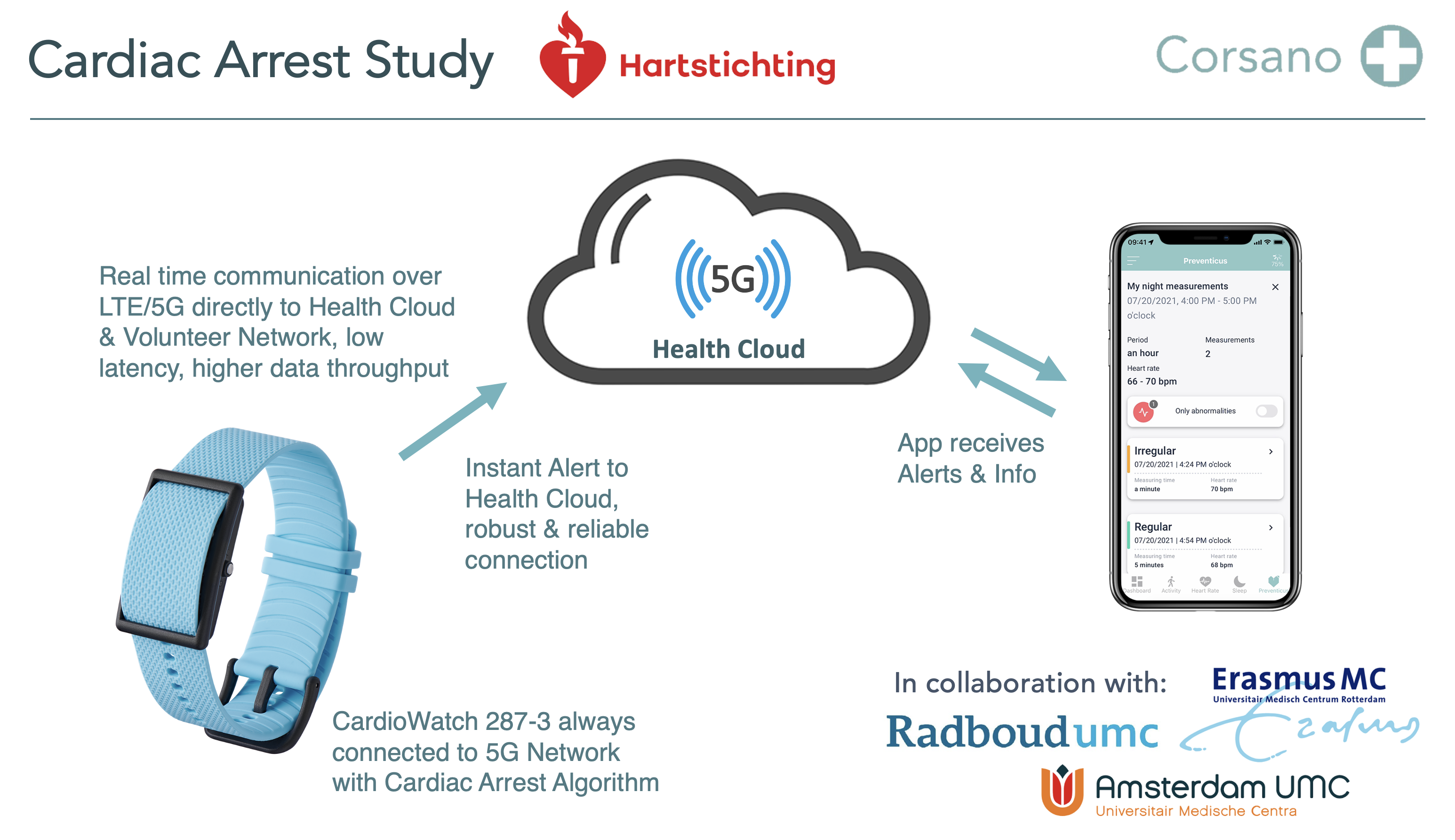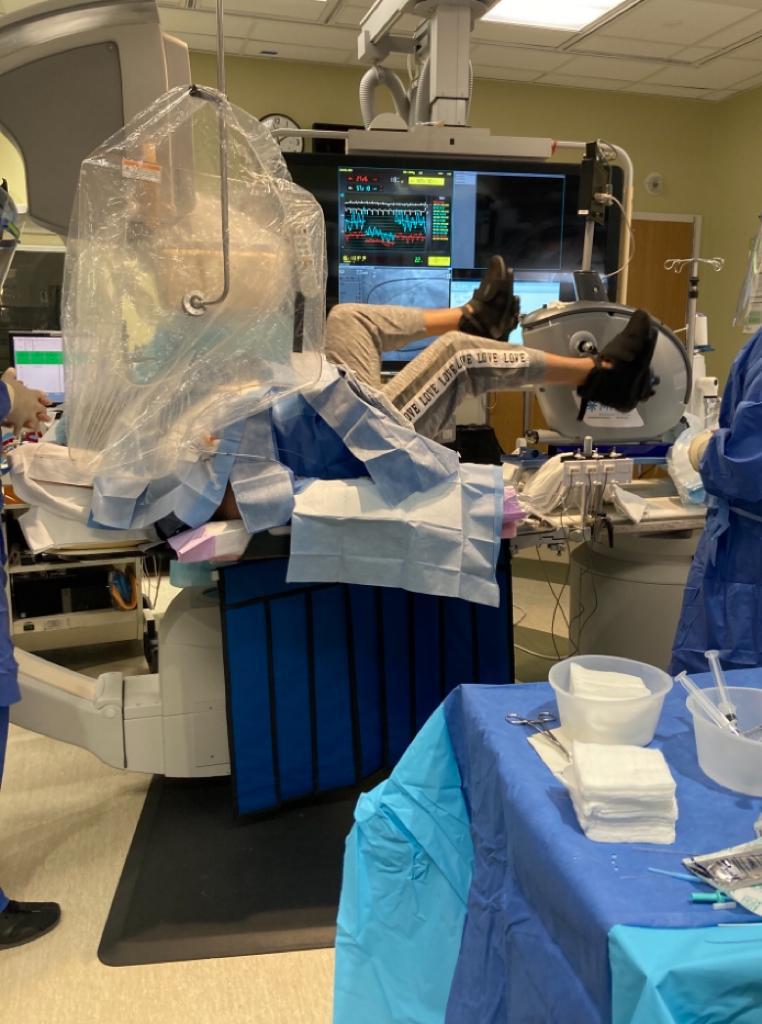Academic Research
Academic Research
Corsano’s CardioWatch Bracelet enables the collection of richer data and insights to enhance understanding of the effects of treatment and objective measures of intervention effects during clinical trials.
Incorporating Corsano’s CardioWatch 287 into clinical trial designs has the potential to address many clinical trial challenges, including patient retention and engagement.

Remote patient monitoring makes it easier for patients to participate and improves recruitment through greater access to diverse patient populations.
The use and management of data from CardioWatch offers effective clinical care while protecting the patient with ongoing monitoring, ensuring academic researchers and subjects remain connected wherever they are located.
Corsano’s CardioWatch real-time data also helps researchers detect early signs of adverse events or other issues related to the study, allowing for early intervention and improved patient safety.
By providing raw data, CardioWatch can generate a rich stream of data that can be used to gain insights into patient behavior and vital signs. This data can be made available for AI and machine learning, allowing for more advanced analysis and personalized healthcare.
Corsano is involved in over 30 mostly cardiovascular and oncology clinical trials, examples include:
Unwitnessed Cardiac Arrest
A multicenter study on patterns of photoplethysmography in relation to cardiac collapse: towards automated detection of cardiac arrest.
Out-of-hospital cardiac arrest (OHCAs) are a major cause of mortality in the Western world. Survival depends on early recognition of cardiac arrest and initiation of cardiopulmonary resuscitation (CPR). With help of layperson volunteers who swiftly initiate CPR prior to ambulance arrival, survival chances have improved markedly. Automated detection of cardiac arrest using a consumer wearable may further decrease treatment delays and is a next promising step in improving resuscitation care.
The Overall objective is to develop a user-friendly medically certified wearable that automatically detects circulatory arrest using multiple sensors including photoplethysmography (PPG) and that automatically activates the emergency medical system, including layperson volunteers of the HartslagNu network.

Corsano Health is developing the PPG-based algorithm for detection of circulatory arrest and will incorporate it into CardioWatch 287. The user interface will be connected to the emergency medical system and HartslagNu to be able to automatically activate these systems in case of detection of circulatory arrest. The techniques needed for this are in part already available, but must be converted for this application. A cloud-to-cloud API to connect to multiple clinical trial partners and various algorithms are already being successfully applied to the data generated by the CardioWatch 287 Bracelet.
Phenotypes in Chronic Heart Failure
Another example is Corsano’s involvement in a major study to identify congestion phenotypes in patients with chronic heart failure at Duke Heart Center. CardioWatch 287-2 will measure PPG G/R/iR on patients adjunct to an elective right heart catheterization while performing a 6 minutes exercise. A-Line measurements are the gold standard for reference.
Congestion is a hallmark of heart failure (HF). New evidence suggests that volume overload due to salt and water retention is responsible for only half of cardiac decompensations. Inappropriate redistribution of intra-vascular volume might be an additional important driver of cardiac decompensation and can explain an increase in central filling pressures in the absence of weight gain or total body volume increase. There is an urgent need to uncover different congestion phenotypes as this is the basis of personalized (decongestive) HF therapies.
The study at Duke will explore different congestion phenotypes, which will help identify responders to splanchnic nerve block therapy. The overall objective is to perform a comprehensive analysis of the congestion phenotype in patients with chronic HF.
Aim 1: Study the congestion phenotype of chronic HF patients (N=1000) using a variety of traditional and novel congestion measures.
Aim 2: Correlate the non-invasive markers of intra-vascular and extra-vascular congestion with the gold- standard of invasive hemodynamics (RHC)

In conclusion, the use of CardioWatch 287 Bracelets in clinical trials can provide academic researchers with a powerful tool for collecting and analyzing data, leading to a better understanding of the effects of treatment and improved patient outcomes.
